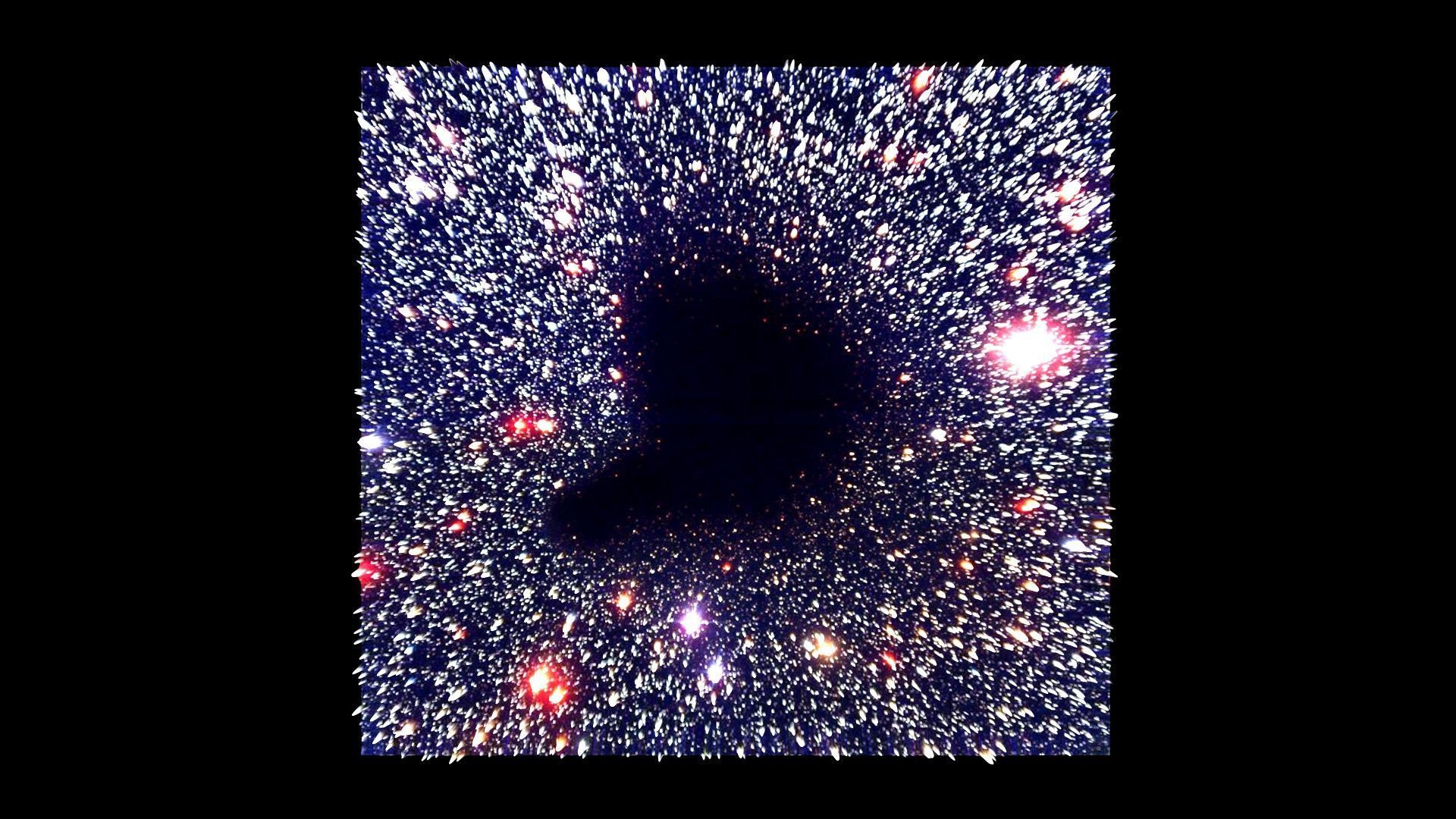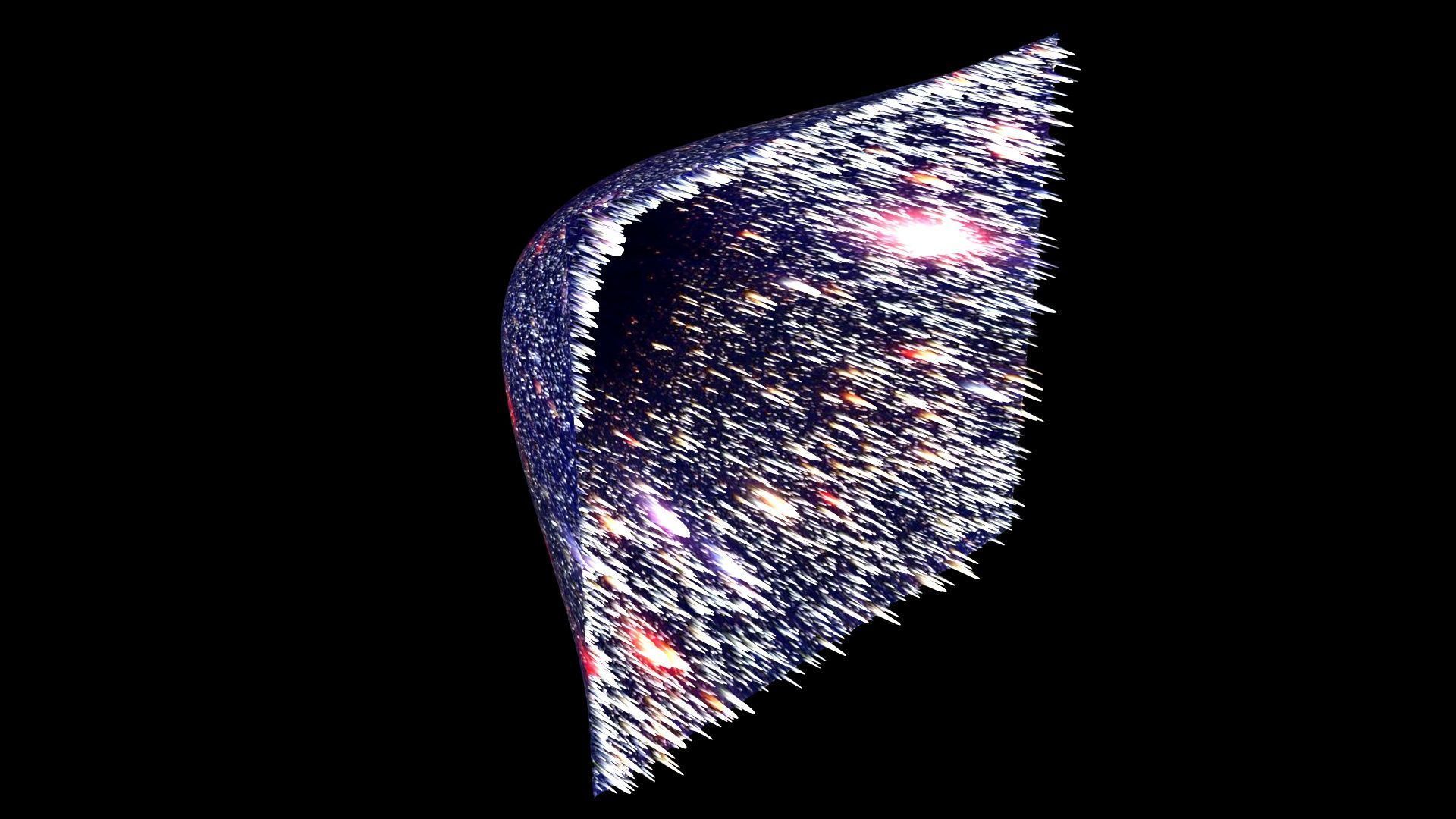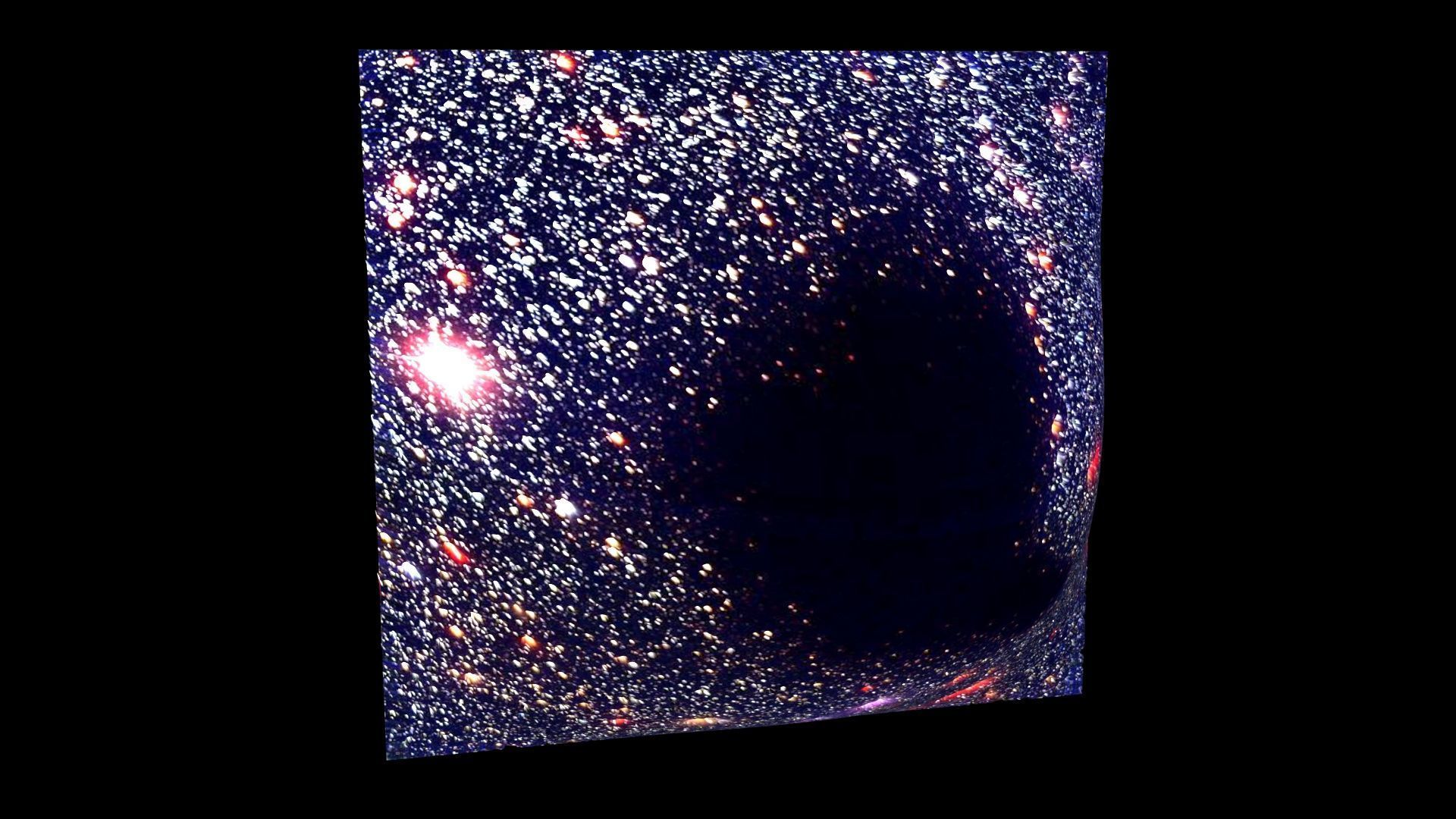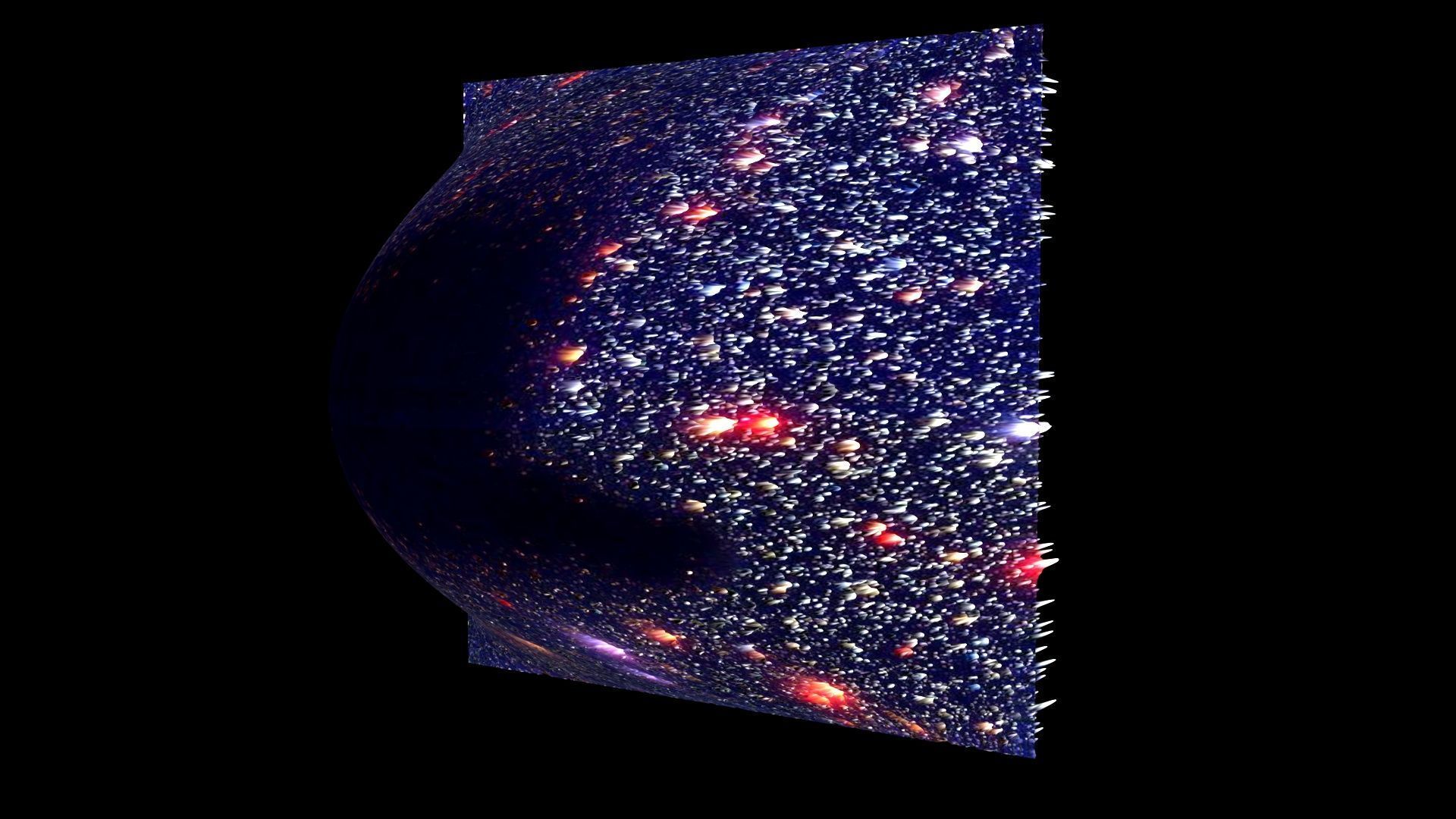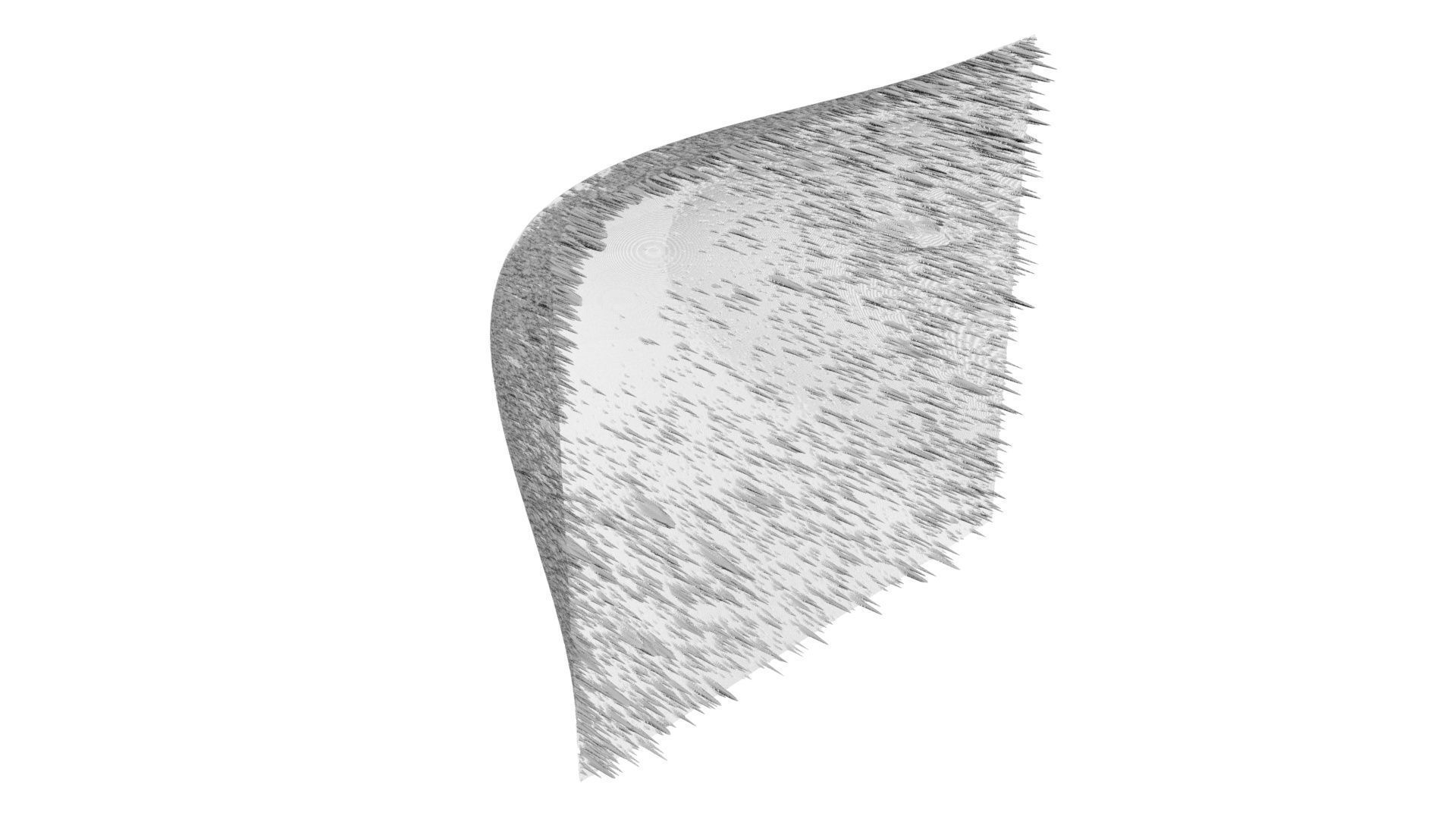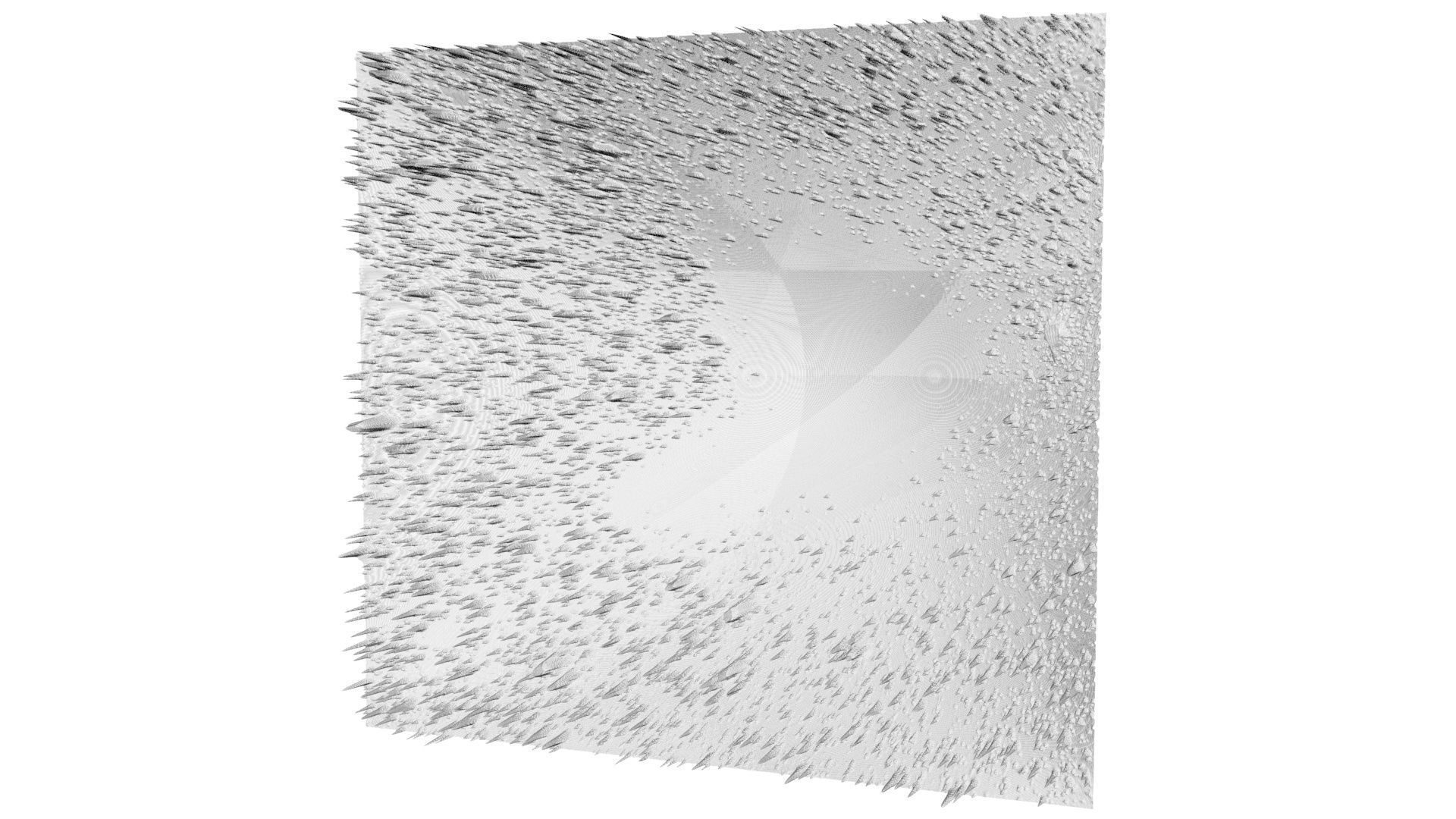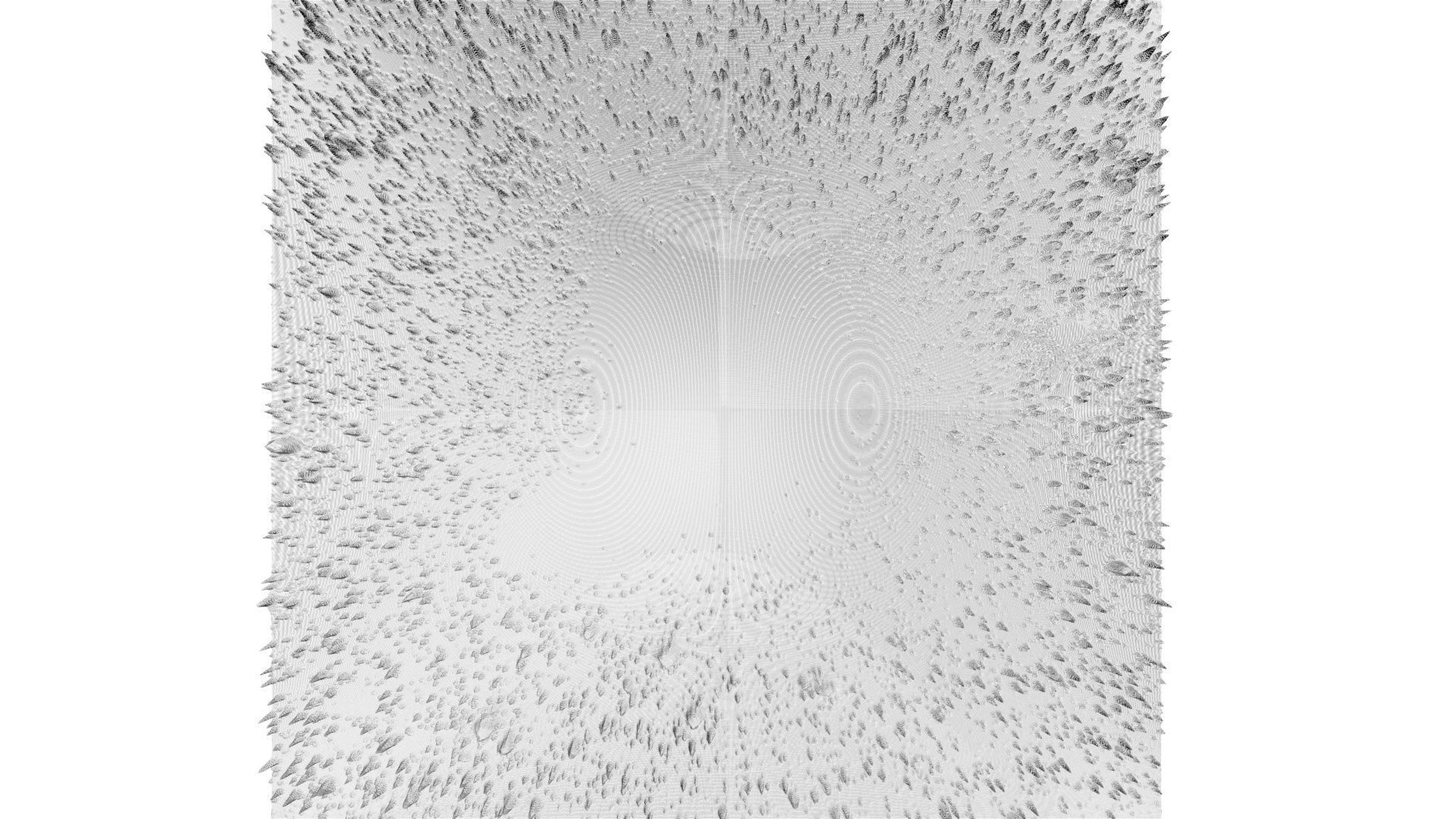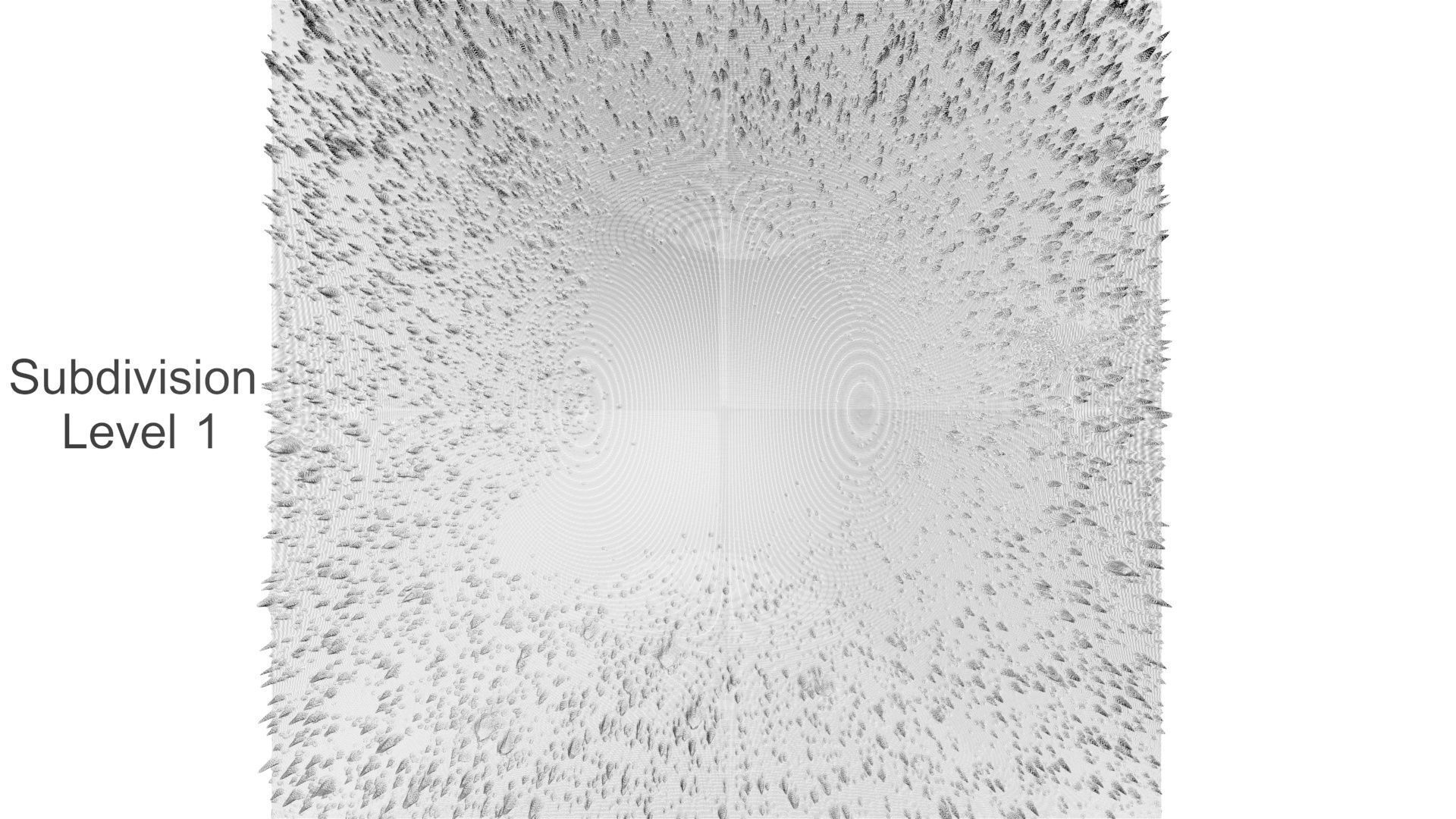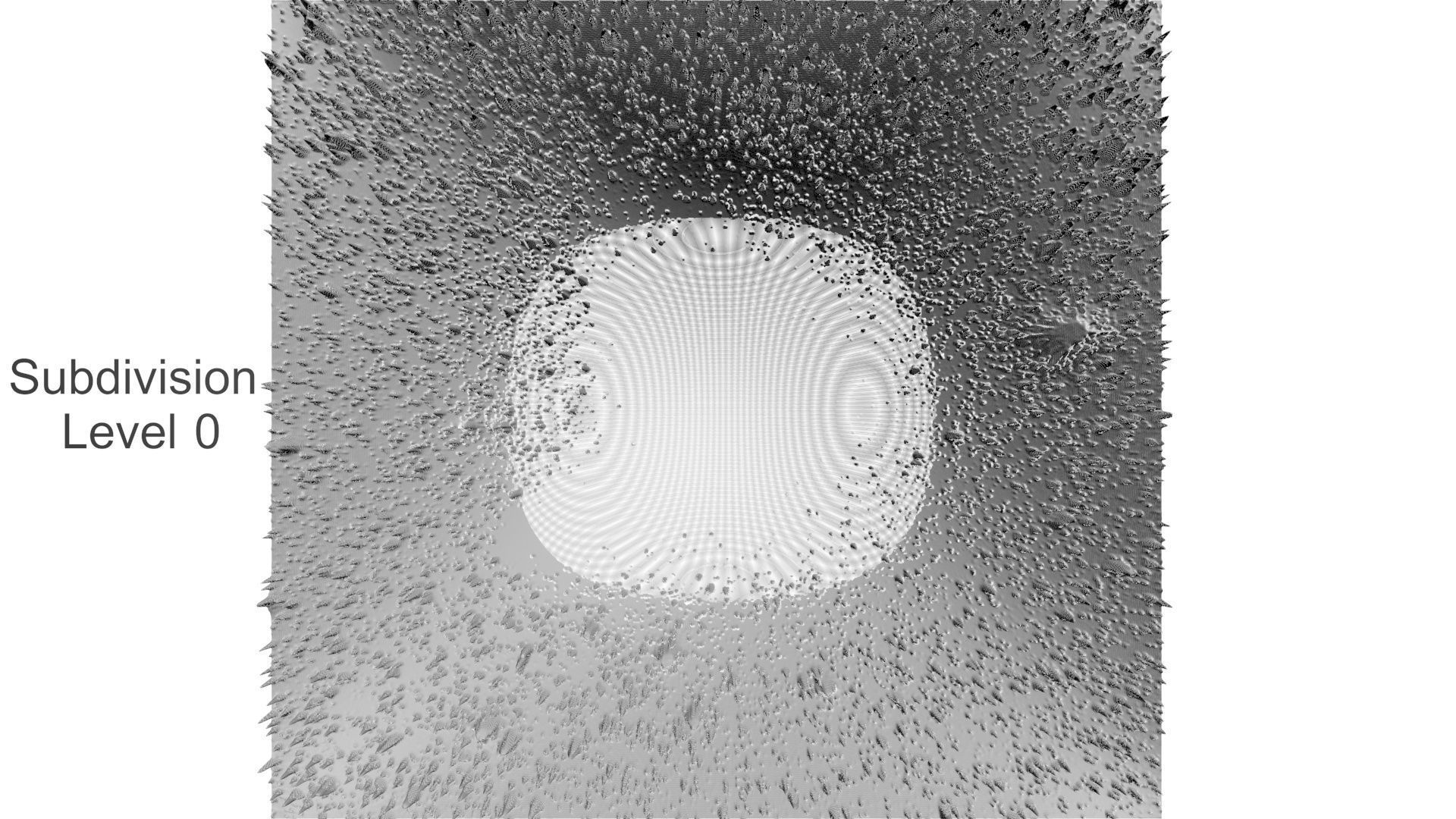
Bootes Void 3D model
DescriptionDescription
Bootes Void. The Bootes Void is like a boot or sock. In astronomy, Bootes Void are isolated and relatively small dark nebulae containing dense cosmic dust and gas from which star formation may take place. Bootes Void are found within H II regions, and typically have a mass of about two to 50 solar masses contained within a region about a light year or so across (about 4.5×1047 m3). They contain molecular hydrogen (H2), carbon oxides and helium, and around 1% (by mass) silicate dust. Bok globules most commonly result in the formation of double- or multiple-star systems. An analysis of near-infrared observations published in 1990 confirmed that stars were being born inside Bootes Void. Further observations have revealed that some Bok globules contain embedded warm sources, some contain Herbig–Haro objects, and some show outflows of molecular gas. Millimeter-wave emission line studies have provided evidence for the infall of material onto an accreting protostar. It is now thought that a typical Bok globule contains about 10 solar masses of material in a region about a light-year or so across, and that Bok globules most commonly result in the formation of double- or multiple-star systems.
Texture Resolution: 700 x 700

